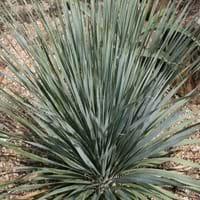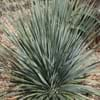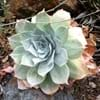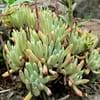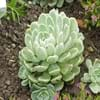Life Span
Perennial
Perennial
Type
Cactus or Succulent
Shrub
Origin
Southwestern United States, Mexico
Eastern Asia, Japan
Types
Dasylirion acrotrichum, Dasylirion berlandieri, Dasylirion cedrosanum
Not Available
Habitat
Desert, Dry areas, Rocky areas
Old fields, stream banks
USDA Hardiness Zone
12-15
4-8
Sunset Zone
10, 11, 12, 13, 14, 15, 16, 17, 18, 19, 20, 21, 22, 23, 24
A3, 2b, 3a, 3b, 4, 5, 6, 7, 8, 9, 10, 11, 12, 13, 14, 15, 16, 17, 18, 19, 20, 21, 22, 23, 24
Habit
Rosette/Stemless
Oval or Rounded
Flower Color
Yellow
Yellow, Yellow green
Flower Color Modifier
Not Available
Not Available
Fruit Color
Tan
Red orange
Leaf Color in Spring
Green, Blue Green
Light Green
Leaf Color in Summer
Green, Blue Green
Green
Leaf Color in Fall
Green, Blue Green
Purple, Orange, Burgundy, Crimson
Leaf Color in Winter
Green, Blue Green
Not Available
Leaf Shape
Narrow
Obovate
Plant Season
Spring, Summer, Fall, Winter
Spring, Summer, Fall, Winter
Sunlight
Full Sun
Full Sun, Partial Sun
Type of Soil
Loam, Sand
Clay, Loam, Sand
The pH of Soil
Neutral, Alkaline
Acidic, Neutral, Alkaline
Soil Drainage
Well drained
Average
Bloom Time
Spring
Spring, Late Spring
Tolerances
Drought
Pollution, Drought, Salt, Soil Compaction
Where to Plant?
Container, Ground
Ground, Pot
How to Plant?
Leaf Cutting, Seedlings, Stem Cutting
Seedlings
Plant Maintenance
Medium
Medium
Watering Requirements
Does not require lot of watering, Water occasionally
Requires regular watering during dry weather
In Summer
Lots of watering
Lots of watering
In Spring
Moderate
Moderate
In Winter
Average Water
Average Water
Soil pH
Neutral, Alkaline
Acidic, Neutral, Alkaline
Soil Type
Loam, Sand
Clay, Loam, Sand
Soil Drainage Capacity
Well drained
Average
Sun Exposure
Full Sun
Full Sun, Partial Sun
Pruning
Remove damaged leaves, Remove dead branches, Remove dead leaves, Remove dead or diseased plant parts
Remove damaged leaves, Remove dead branches, Remove dead leaves
Fertilizers
All-Purpose Liquid Fertilizer, Fertilzer with low nitrogen content
All-Purpose Liquid Fertilizer
Pests and Diseases
Red blotch
Red blotch, Sunken patches
Plant Tolerance
Drought
Drought
Flower Petal Number
Single
Single
Fragrant Bark/Stem
Not Available
No
Foliage Texture
Bold
Medium
Foliage Sheen
Matte
Matte
Attracts
Bees, Butterflies, Not Available
Birds
Allergy
Not Available
Not Available
Aesthetic Uses
Ground Cover
Borders
Beauty Benefits
Not Available
Not Available
Environmental Uses
Air purification
Air purification
Medicinal Uses
Not Available
Anthelmintic, Antibacterial, Antiseptic, Cancer
Part of Plant Used
Not Available
Fruits, Leaves
Other Uses
useful as a ground cover
Used to make yellow dye
Used As Indoor Plant
No
No
Used As Outdoor Plant
Yes
Yes
Garden Design
Container, Dried Flower, Everlasting, Feature Plant, Rock Garden, Wall, Wildflower
Edging, Foundation, Hedges, Mixed Border, Rock Garden, Wall
Botanical Name
DASYLIRION berlandieri
BERBERIS thunbergii
Common Name
Blue Giant, Blue Twister, Desert Spoon, Zaragosa
Japanese Barberry
In Hindi
Blue Giant Grass
Japanese Barberry
In German
Blue Giant Grass
Thunberg-Berberitze
In French
Blue Giant Herbe
Berberis thunbergii
In Spanish
Blue Grass gigante
Berberis thunbergii
In Greek
Μπλε Giant Grass
Japanese Barberry
In Portuguese
Blue Grass gigante
Japanese Barberry
In Polish
Błękitny Gigant Trawa
Berberys Thunberga
In Latin
Giant herba blue
Japanese Barberry
Phylum
Tracheophyta
Magnoliophyta
Class
Not Available
Magnoliopsida
Order
Asparagales
Ranunculales
Family
Agavaceae
Berberidaceae
Genus
Dasylirion
Berberis
Clade
Angiosperms, Monocots
Angiosperms, Eudicots
Tribe
Not Available
Not Available
Subfamily
Nolinoideae
Not Available
Number of Species
Not Available
Season and Care of Blue Giant and Japanese Barberry
Season and care of Blue Giant and Japanese Barberry is important to know. While considering everything about Blue Giant and Japanese Barberry Care, growing season is an essential factor. Blue Giant season is Spring, Summer, Fall and Winter and Japanese Barberry season is Spring, Summer, Fall and Winter. The type of soil for Blue Giant is Loam, Sand and for Japanese Barberry is Clay, Loam, Sand while the PH of soil for Blue Giant is Neutral, Alkaline and for Japanese Barberry is Acidic, Neutral, Alkaline.
Blue Giant and Japanese Barberry Physical Information
Blue Giant and Japanese Barberry physical information is very important for comparison. Blue Giant height is 17.78 cm and width 10.16 cm whereas Japanese Barberry height is 90.00 cm and width 120.00 cm. The color specification of Blue Giant and Japanese Barberry are as follows:
Blue Giant flower color: Yellow
Blue Giant leaf color: Green and Blue Green
Japanese Barberry flower color: Yellow and Yellow green
- Japanese Barberry leaf color: Light Green
Care of Blue Giant and Japanese Barberry
Care of Blue Giant and Japanese Barberry include pruning, fertilizers, watering etc. Blue Giant pruning is done Remove damaged leaves, Remove dead branches, Remove dead leaves and Remove dead or diseased plant parts and Japanese Barberry pruning is done Remove damaged leaves, Remove dead branches and Remove dead leaves. In summer Blue Giant needs Lots of watering and in winter, it needs Average Water. Whereas, in summer Japanese Barberry needs Lots of watering and in winter, it needs Average Water.
